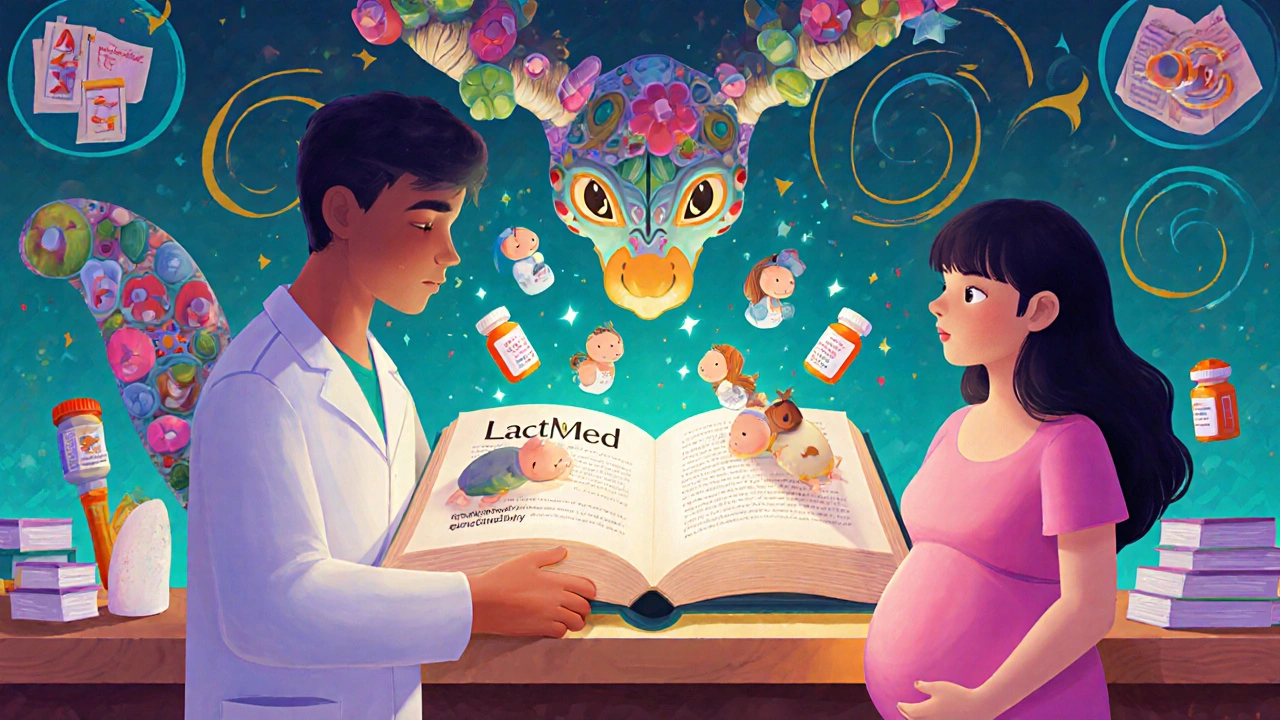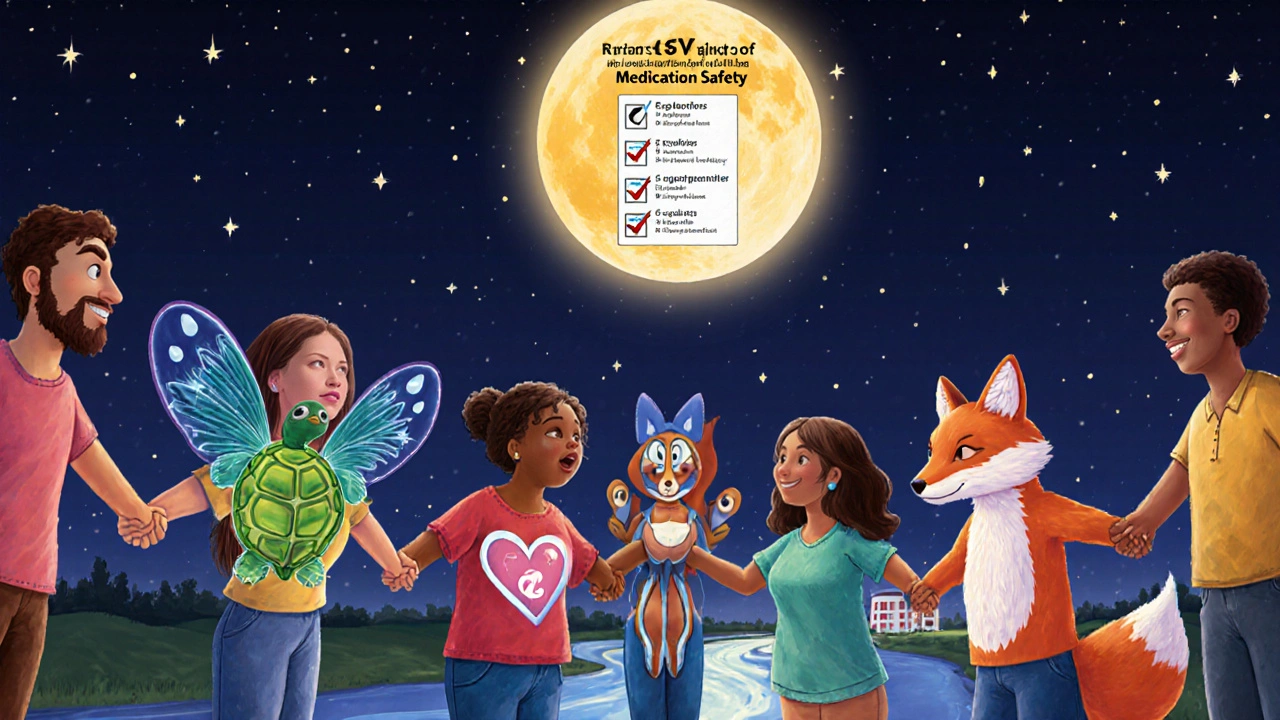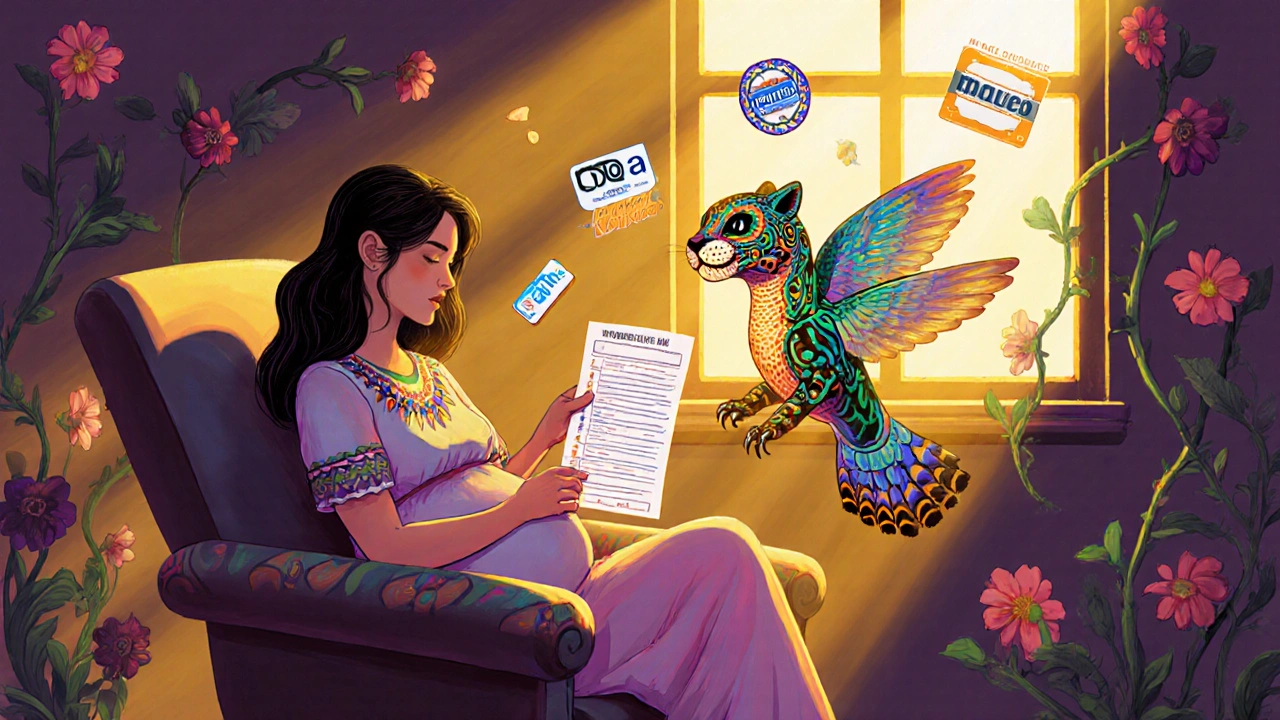When you’re pregnant or planning to breastfeed, taking any medication - even something as simple as ibuprofen or an antidepressant - isn’t just a personal choice. It’s a conversation that needs to happen with your provider, and it needs to happen early, clearly, and often. Too many people are left guessing what’s safe, and too many providers skip the discussion entirely. That’s not just risky - it’s preventable.
Why This Conversation Can’t Wait
About 90% of pregnant people in the U.S. take at least one medication during pregnancy. That’s not unusual. It’s normal. Many have chronic conditions like depression, asthma, diabetes, or epilepsy - conditions that need ongoing treatment. Stopping meds cold turkey can be more dangerous than keeping them. But without clear guidance, people often stop on their own. One study found that 40% of pregnant patients discontinue necessary medications because they’re afraid - not because their provider told them to. The stakes are high. Medication exposure contributes to about 3% of birth defects. But here’s the flip side: untreated maternal illness leads to preterm birth, preeclampsia, and even stillbirth. The goal isn’t to avoid all drugs. It’s to choose the right ones, at the right time, with full understanding.Start Before You’re Pregnant
The best time to talk about medication safety is before conception. If you’re trying to get pregnant, or even thinking about it, schedule a medication review. This isn’t just for people on high-risk drugs like isotretinoin (Accutane) - it’s for anyone taking regular prescriptions, over-the-counter meds, or supplements. Providers now use the FDA’s Pregnancy and Lactation Labeling Rule (PLLR), which replaced the old A, B, C, D, X categories. Instead of vague letters, labels now give detailed summaries: risks during each trimester, data from human studies, and what’s known about breastfeeding. Ask your provider: “What does the label say about this drug for someone trying to conceive?” If you’re on a medication with known risks - like certain antiseizure drugs or mood stabilizers - your provider may recommend switching to safer alternatives before you get pregnant. For example, lamotrigine is often preferred over valproic acid for epilepsy during pregnancy because it has a much lower risk of birth defects.What to Say During Prenatal Visits
Don’t wait for your provider to bring it up. Bring it yourself. Say: “I’m taking [medication name]. I want to make sure it’s still safe now that I’m pregnant.” Here’s what a good conversation looks like:- They ask what you’re taking - including vitamins, herbal teas, and CBD.
- They check your list against the TERIS database or LactMed - both free, evidence-based tools used by specialists.
- They explain risk in numbers: “This drug has a 1 in 1,000 chance of causing a specific issue. The background risk for any pregnancy is 3-5%. So your total risk goes from 4% to 4.1%.”
- They ask: “What happens if you stop this?” and discuss non-drug options like therapy, dietary changes, or physical therapy.
- They give you a printed fact sheet - preferably from MotherToBaby, which has over 150,000 consultations annually and aligns with 98% of expert guidelines.

Medication Changes? That’s a Red Flag
Any time your medication changes - new prescription, dose adjustment, or even stopping one - that’s a trigger for another safety check. Don’t assume your provider remembers what you were on last visit. Bring your list. Update it. Ask: “Is this still okay for pregnancy?” Some meds are safe in the first trimester but not later. For example, NSAIDs like ibuprofen are fine early on but can cause low amniotic fluid and heart problems after 20 weeks. Acetaminophen (paracetamol) remains the only recommended pain reliever across all trimesters, despite ongoing research into possible long-term effects. Pharmacists play a key role here. If you fill prescriptions at a pharmacy with a clinical pharmacist, ask them to review your meds for pregnancy safety. APhA guidelines say pharmacists should check your list at three points: when pregnancy is confirmed, when meds change, and when you start breastfeeding.Breastfeeding and Medications: The Myths
Many people stop breastfeeding because they’re told a medication isn’t safe - even when it is. The truth? Most drugs pass into breast milk in tiny amounts, and even fewer affect the baby. LactMed, maintained by the National Library of Medicine, is the gold standard. It has data on over 6,000 drugs and their effects on nursing infants. For example:- SSRIs like sertraline are among the safest antidepressants for breastfeeding - low transfer, minimal infant exposure.
- Most antibiotics (amoxicillin, cephalexin) are fine.
- Codeine is risky because some people metabolize it too quickly, leading to dangerous morphine levels in breast milk.
What to Do If Your Provider Doesn’t Talk About It
If your provider brushes off your concerns, you’re not overreacting. You’re being responsible. Here’s what to do:- Print out a MotherToBaby fact sheet for your medication and bring it to your next visit.
- Ask: “Can you refer me to a maternal-fetal medicine specialist or a clinical pharmacist who specializes in pregnancy?”
- Call MotherToBaby directly at 1-866-626-6847. They’ll talk to you and even call your provider with evidence-based info.
- Document everything. Write down what was said, what was recommended, and what you decided.

System Gaps - And How to Navigate Them
Not every clinic has the tools or staff to do this well. Rural clinics have only 35% access to teratology specialists, compared to 89% in big hospitals. Medicaid patients are half as likely to get documented medication reviews as privately insured patients. That doesn’t mean you can’t get good care. It just means you have to be your own advocate. Use free tools:- MotherToBaby - free phone and chat service
- LactMed - free app and website by the NIH
- TERIS - online database of teratogen risks
- Epocrates or Lexicomp - if your provider uses them, ask to see the pregnancy/lactation section
What’s Changing - And What to Expect
Medication safety is becoming standard. By 2025, all OB/GYN residencies in the U.S. will require training in this area. The FDA now requires new drugs to include clear fetal risk summaries. CMS (Medicare/Medicaid) will start requiring documentation of these discussions in 90% of prenatal visits for clinics to get full reimbursement. Telehealth is helping. Since 2020, telehealth consultations for pregnancy medication safety have doubled. Apps like Epic’s Haiku now integrate MotherToBaby data directly into provider workflows. But progress isn’t equal. The biggest gap isn’t knowledge - it’s access. If you’re in a rural area, on Medicaid, or seeing a primary care doctor instead of an OB/GYN, you’re more likely to fall through the cracks. That’s why your voice matters.Final Checklist Before Your Next Appointment
Before you walk in, do this:- Write down every medication, supplement, and herbal product you take - including dosage and frequency.
- Know your pregnancy status: trying to conceive? Already pregnant? Planning to breastfeed?
- Write down your top two concerns: “I’m worried about my antidepressant,” or “I need pain relief but don’t want to harm the baby.”
- Bring a printed MotherToBaby fact sheet for your top two meds - or be ready to ask for one.
- Ask: “What’s the evidence behind this recommendation? Can you show me the data?”
Is it safe to take ibuprofen while pregnant?
Ibuprofen and other NSAIDs are generally safe in early pregnancy but should be avoided after 20 weeks. After that point, they can cause low amniotic fluid and heart problems in the baby. Acetaminophen (paracetamol) is the only recommended pain reliever throughout pregnancy, based on current FDA guidelines.
Can I keep taking my antidepressant while pregnant or breastfeeding?
Many antidepressants, especially SSRIs like sertraline and citalopram, are considered safe during pregnancy and breastfeeding. The risks of untreated depression - including preterm birth, low birth weight, and postpartum complications - often outweigh the small potential risks of the medication. Always discuss alternatives with your provider, but don’t stop abruptly.
What if my doctor says a medication is fine but I’m still worried?
It’s okay to seek a second opinion. Call MotherToBaby at 1-866-626-6847. They’re a free, expert-run service that provides evidence-based info and can even contact your provider with updated research. You have the right to understand the risks and benefits before making a decision.
Are natural remedies safer than medications during pregnancy?
Not necessarily. Many herbal supplements and “natural” products aren’t tested for safety in pregnancy. For example, black cohosh and dong quai can stimulate contractions. Even something like high-dose vitamin A can cause birth defects. Always check with a provider before using any supplement.
How do I know if a medication is safe for breastfeeding?
Use LactMed, a free, trusted database from the National Library of Medicine. It gives detailed info on how much of a drug passes into breast milk and whether it’s likely to affect the baby. Most medications are safe, but some - like codeine, certain chemotherapy drugs, or radioactive iodine - are not. Always confirm with a pharmacist or specialist before assuming.
Why do I get conflicting advice from my OB and pharmacist?
Different providers may rely on different sources or have different levels of training in maternal pharmacology. The best solution is to ask both to consult MotherToBaby or LactMed - the same evidence-based tools. If there’s still disagreement, ask for a referral to a maternal-fetal medicine specialist or clinical pharmacist who specializes in pregnancy.
